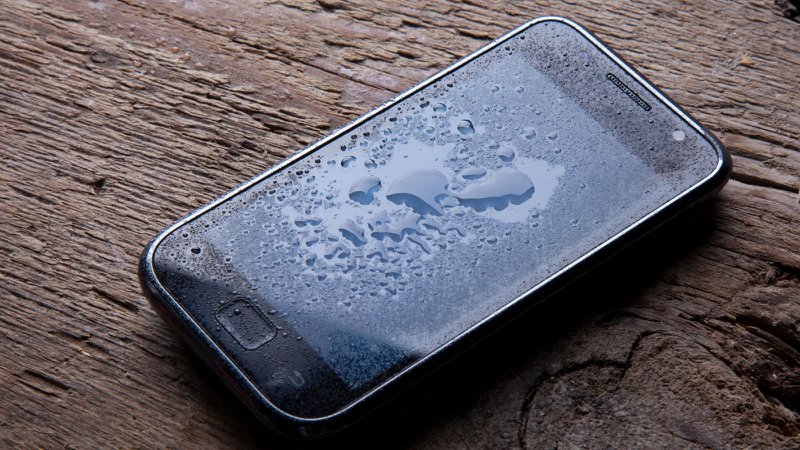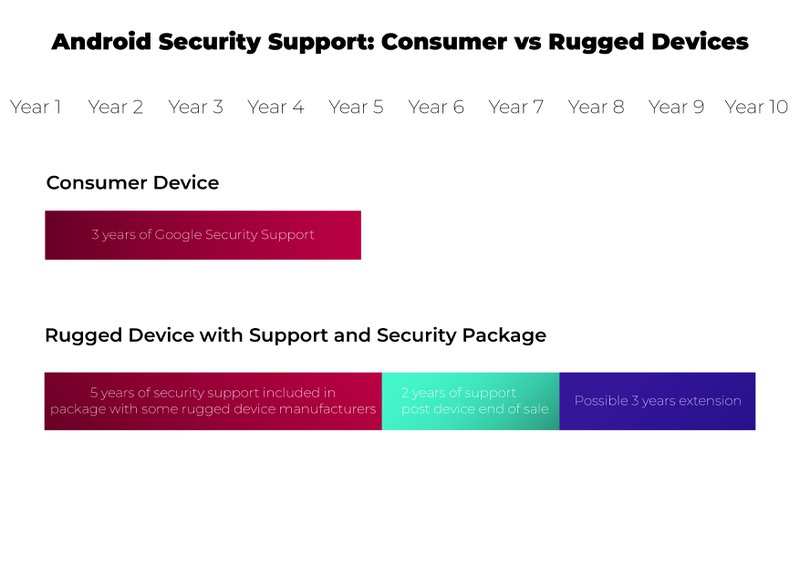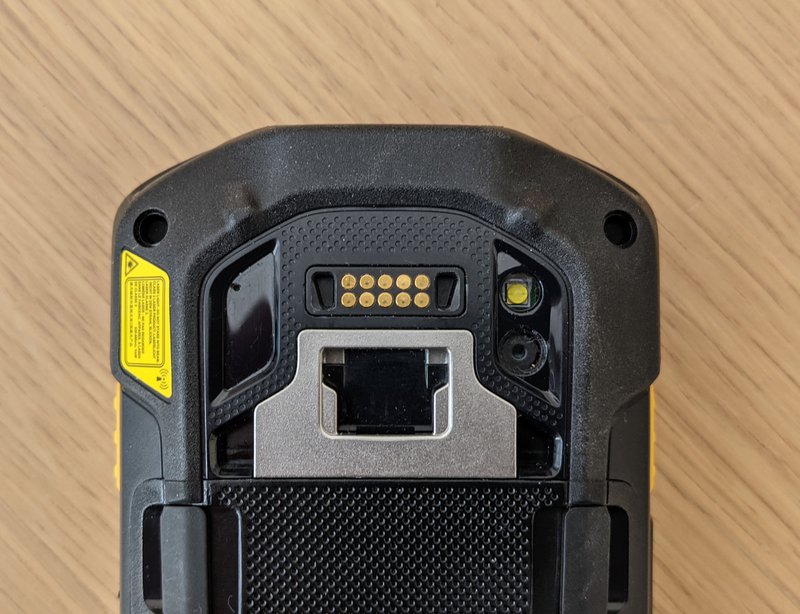One of the biggest mistakes made by businesses buying technology is choosing consumer mobile devices instead of rugged ones.
That’s a pretty bold statement, but the facts bear it out. The failure rate of consumer devices is 2.9 times higher than enterprise phones [1]. In other words, organisations are using business mobile devices that are not up to the task. They are paying for this mistake in lost productivity due to device failure, and in the need to regularly replace defective handsets; anecdotal evidence suggests that workers frequently break as many as five phones in three years.
But why are these consumer mobile devices failing? We look at nine ways they fall short for businesses. We’d encourage you to think about which of these failures might apply now or in the future for your organisation. And then consider carefully before purchasing cheaper consumer phones over rugged models – because, as you’ll see, they will cost you far more in the long run.
Why consumer devices fail:
1) They can’t take the shocks and drops
Rugged phones are designed to conform to MIL-STD, a rugged classification system for shocks and drops designed by the US military. During testing, they will be dropped from four feet up to 27 times, including on the edges and corners. They survive because their casings and, crucially, internal components are designed to withstand this harsh treatment. Consumer phones will not meet as high a standard. When they fall, they will often break. Even if you pair them with a rugged case.
2) They can’t take the heat (or cold)
You may not have heard of ‘thermal throttling’, but any of your people working in hot environments using non-rugged business mobile devices will know its effects. In this scenario, your phone’s CPU gets hot and automatically slows down to reduce the heat. Your employees, meanwhile, get less work done. Conversely, extreme cold can cause your touch screen to become unresponsive and the battery drain more quickly. Your phone might even shut down unexpectedly. Not so good for employees working in refrigeration, or extremely cold weather. Rugged models, meanwhile, commonly withstand ranges from -20 °C to 50 °C (-4 °F to 122 °F ).
3) They let in liquids and small particles
Everyone has their story about dropping their phone into water, or perhaps getting it covered in sand. It rarely has a happy ending. That’s because consumer phones are unlikely to have the high IP (ingress protection) rating of rugged phones, which can see them withstand water jets, total immersion and tiny particles. Find out more about all of these first three points in our post What Makes a Rugged Mobile ‘Rugged’.

4) They run out of battery too quickly
A modern phone’s battery functions for two to three years before it starts dropping charge by around 20 per cent. This drop increases the chance your workers will be left high and dry with powered-down phones. These days, it’s impossible to change the battery on many consumer phones, meaning the only option is to replace the device. If you’re a rugged phone user, however, you can switch the battery and work uninterrupted. Many rugged device users can also ‘hot swap’ batteries – replace a depleted battery with a charged one without powering down the device.
5) They are supported for only a limited time
Most consumer devices have a limited warranty and support for only a few years, and accidental damage is unlikely to be covered. After this relatively short period, your business mobile devices will be left high and dry in terms of support and repairs. In this scenario, businesses are essentially living on a knife-edge hoping nothing goes wrong, because there will be no one there to fix devices.
Rugged devices are designed so repairs, parts and peripherals are available for as long as 10 years [1]. Also, the support provided by rugged manufacturers can be incredibly comprehensive. For instance, Zebra’s OneCare range of plans will fix whatever issues you are having with devices and software rapidly, so you won’t need to endure costly shutdowns while waiting for a solution.
6) They are not necessarily secure
The limited support mentioned above also relates to security updates. Consumer Watchdog estimates that 20 per cent of Android devices no longer receive vital security updates from Google, leaving them open to malware and other security breaches [1]. On average, these breaches cost £11,000 per incident for small businesses [1]. Of course, you could replace all devices every two to three years, which would significantly increase the total cost of ownership. Or you could invest in a rugged device, where support and security updates are available for up to 10 years.

7) They may struggle to support accessories
Take one consumer device and add barcode and RFID scanning hardware, mobile printing accessories and vehicle-mounting devices and you have an increasingly versatile piece of technology. You’re also going to pay a lot for these add-ons which, in many cases, may already be integrated or included with a rugged device at the time of purchase.
Even when you do need to buy accessories for a rugged device, they are likely to be a far better investment than when buying similar add ons for consumer models. This is because – unlike most consumer devices – rugged devices are designed for backwards compatibility. When you upgrade your devices, all of the accessories will not suddenly become defunct – you’ll be able to continue using them. This makes far better business sense and reduces the total cost of ownership when compared to consumer devices.
8) Their features may not be fit for purpose
The name of the game with any device for business has to be productivity. But what if your consumer device appears to have the functionality of a rugged counterpart, but in truth isn’t performing to anywhere near the same degree? A classic example is the barcode scanner. Yes, consumer device cameras can often be used as barcode scanners, and that might be a solution for you. But a consumer camera will never pick up codes as quickly or efficiently as purpose-built tech. In fact, rugged devices with built in barcode scanners are a different beast altogether. The expanded working range and wide field of view allows workers to scan barcodes nearer and farther away, while omnidirectional scanning delivers true point-and-shoot performance – there is no need to align the device with the barcode.
9) They fail to charge properly
One of the biggest points of failure for consumer devices is the charging mechanism: fragile pins are inserted in and out of chargers repeatedly, get damaged and work intermittently or fail. This can be disastrous for businesses, resulting in more downtime and more failing devices. Rugged devices use industrial charging solutions that remove the need for cables and fragile pins. They are backward and forward compatible, too, which helps prolong the life of a device.

Conclusion
We hope you’re convinced that consumer models are often a fragile and precarious option for your business mobile devices, compared to rugged counterparts. The data says it all: a rugged device chosen to match the requirements of your business is likely to last three times longer than a consumer device [1].
So why do people persist with consumer devices?
Undoubtedly, it is down to cost. Initial outlay for consumer devices is less than for rugged counterparts. However, research by tech market intelligence company VDC shows that when you take into account the full cost of ownership – initial outlay, deployment, training, support and productivity loss caused by downtime – rugged devices have a 52.7% lower total cost of ownership than consumer devices over five years [1].
Our view? When you consider our nine ways consumer devices commonly fail and take into account the true cost of ownership, making the right choice is easy.
It’s rugged every time.
Take a more detailed look at the consumer versus enterprise phone debate, and make an informed choice for your business, by reading our white paper.
[1] Data and sources available at Nuffield Technologies White Paper Consumer vs Enterprise.

